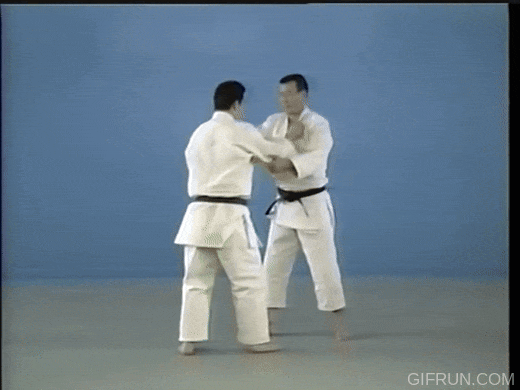In competition judo people often talk of a "drop" seoi-nage. How is this different from a seoi-otoshi?
2 Answers
Note that otoshi (落とし) means "drop".
"Drop" Seoi-Nage vs Seoi-Otoshi
In short, the kodokan distinguishes these throws by whether tori extends their knees to lift and throw uke (nage - throw) after dropping to one/both knees, or keeps them on the ground pulling uke straight down over their back (otoshi - drop):
In seoi-nage you throw your opponent by lifting him over, but in seoi-otoshi you throw him by pulling him down over you. [Seoi-otoshi on both knees.] Whether it's seoi-nage or seoi-otoshi is decided by whether your opponent was lifted or pulled over.
| ... | Standard | Cross grip | Wide step | Drop both knees ⬇️ |
Ippon grip |
|---|---|---|---|---|---|
| Ippon-seoi-nage | ➖ | ➖ |  |
 |
|
| Seoi-nage |  |
 |
 |
 |
➖ |
| Seoi-otoshi |  |
➖ |  |
 |
Differences between seoi-otoshi, seoi-nage and ippon-seoi-nage
These techniques bear similarities in the way in which tori loads uke up, but the principle of throwing is different.
Sᴇᴏɪ-ɴᴀɢᴇ - Tori loads uke's body from below and throws him directly forwards over the right shoulder.
Accordingly, If one or both knees are dropped onto the mat, in seoi-nage tori will raise the knees from the mat, raise the waist, load uke onto his back, and throw him.Sᴇᴏɪ-ᴏᴛᴏsʜɪ - At the moment tori loads uke onto his back, he drops to one or both knees, lowers his body, pulls uke over the right shoulder, and throws him straight down.
It is important to discern the subtle differences between these two techniques. Although it may be difficult to tell them apart at first glance, looking at the concept of the throw will enable you to determine which technique it is.
Generally, tori should pull downwards with the body lowered when throwing with the knees dropped but tori should load uke onto the back throwing with the knees not touching the mat. Therefore we can define seoi-otoshi as throwing with the knees dropped and seoi-nage as throwing from a posture where the knees are not dropped.
This is also true of seoi-otoshi from the form of ippon-seoi-nage.
As such, most 'drop' seoi-nage are actually seoi-otoshi, with the exception of those where uke extends their knees after dropping to drive uke up and over onto their back.
Ambiguous throws
In practice, what a throw ends up being can be different from the intent of tori - someone may enter for an seoi-nage but in the moment depending on uke's reaction it may end up being executed as an seoi-otoshi or uchi-makikomi.
Similarly with uchi-mata and hane-goshi, and osoto-gari and osoto-otoshi or -guruma.
-
1Aye, this is what one of the head instructors of the Kodokan explained to us in a seminar in Berlin years ago: if the drop is the main thrust of the throw, it is seoi-otoshi, as soon as there is a lifting action, it is seoi-nage. Commented Apr 4, 2023 at 17:07
The Kodokan has a definition of seoi otoshi, which is described correctly in the answer by brazofuerte.
Seoi otoshi can also refer to a standing throw that crosses seoi nage hands with tai otoshi legs. The Kodokan would classify this as a seoi nage. Someone using this version of the term seoi otoshi probably uses drop seoi nage to refer a Kodokan seoi otoshi.
You could insist practitioners using this alternate terminology are simply wrong, or you could accept that not everyone agrees on the same names.
This situation is not so different from te guruma, which the Kodokan classifies as a sukui nage variant. It's a throw variant that in some places is widely recognized under one name that the Kodokan calls something else.
It's also similar to how the word biscuit will be interpreted differently in English or American contexts.
-
I, personally, would be careful with the "equally valid" approach. Otoshi means drop/fall. A seoi-nage with a leg extended to the side that does not drop during kake has nothing to do with otoshi, even if that erroneous nomenclature is what I grew up with myself. Commented Apr 6, 2023 at 8:26
-
1@PhilipKlöcking That's perfectly true, but even accepted variations of tai otoshi stray from throwing with a drop to pushing uke forward while blocking with a leg. In general, I think students would be better served with guidelines for describing elements of a throwing technique (such as reap/sweep/hook) than on worrying about what box someone else thinks the throw fits in.– mattm ♦Commented Apr 8, 2023 at 4:17